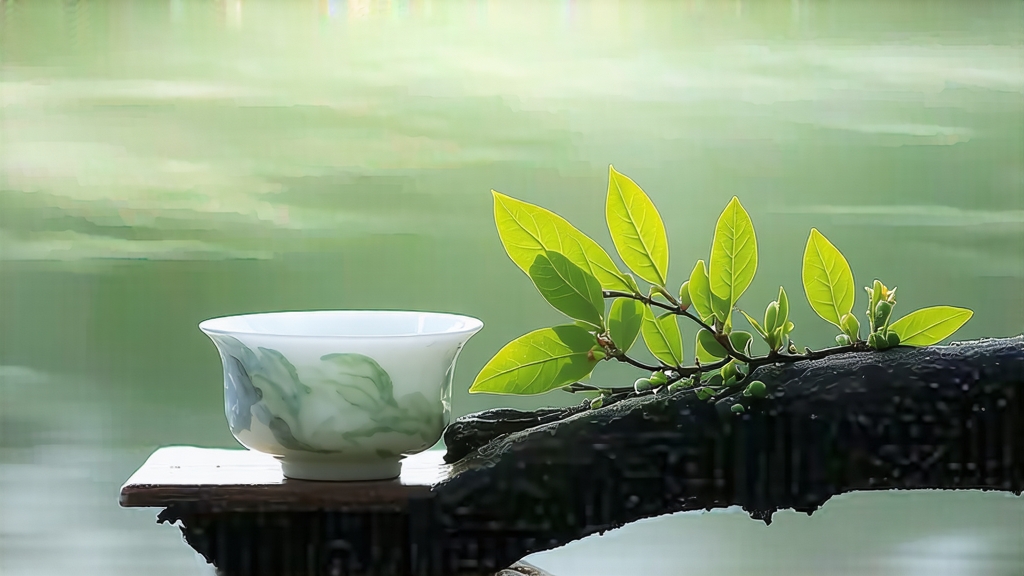
Longjing, often spelled Lung Ching in older romanization, is the single most celebrated green tea of China. To the Chinese it is not merely a beverage; it is a liquid postcard from the hills that cradle Hangzhou’s West Lake, a sip that carries eight centuries of imperial praise, scholarly poetry and meticulous craft. For international drinkers who have encountered only generic “green tea,” Longjing offers a revelation: a leaf that is flat and jade-colored, a liquor that glows like early-morning sunlight on bamboo, and a flavor that walks the tightrope between roasted chestnut and living green pea. This article invites you to travel from Tang-dynasty monastic gardens to the modern tea market, learning how a handful of buds are coaxed into one of the world’s most refined drinks.
History: From Temple Offering to State Gift
The first written record dates to the Song dynasty (960-1279), when monks at Longjing Temple on Fengshan hill planted tea to stay awake during meditation. By the Ming (1368-1644) the tea had become a Hangzhou tribute, carried by canal to Beijing’s Forbidden City. The Qianlong Emperor, during his 1751 tour of the south, allegedly pocketed several bushes after watching village women fry the leaves in woks; imperial seal stamps were later carved into the rock face of Shifeng Mountain, a mark that still draws photographers. In 1949 Chairman Mao presented Longjing to Stalin; in 1972 Premier Zhou Enlai served it to Richard Nixon. Today the highest grade is again reserved for diplomatic banquets, but the democratization of transport means that any careful shopper can own a few grams of the same cultivar once monopolized by emperors.
Terroir: Why West Lake Matters
Chinese tea law defines eighteen square kilometers around West Lake as the authentic core zone. Within that micro-region, the “Five Classic Peaks” (Shifeng, Meijiawu, Wengjiashan, Longjing Village itself, and Hupao) possess the ideal combination of quartz-rich sandstone, morning mist that filters UV light, and a diurnal swing of 8-10 °C that locks amino acids into the leaf. The water of West Lake is alkaline; when farmers irrigate with it, the tea bushes absorb slightly more catechins, giving Longjing its characteristic sweet-bitter balance. Outside this zone, even the same cultivar (Longjing #43 or the heirloom Qunti) produces a duller cup, proving that terroir is not marketing romance but measurable chemistry.
Cultivars: Two Faces of the Same Leaf
- Qunti (群体种) – the “community seed” strain, genetically diverse, sprouting later in early April. Its leaf is smaller, the taste deeper, with a lingering orchid note.
- Longjing #43 – a 1980s clonal selection prized for early budding (late March) and uniform emerald color. It gives the bright chestnut flavor most newcomers recognize.
- A third cultivar, Zhongcha 102, is gaining ground at lower elevations because it withstands drought, but purists insist it lacks the mineral finish. When buying, check the harvest date: anything before 15 March is almost certainly #43; after 5 April you are tasting Qunti.
Craft: The Art of Pan-Firing
Longjing is pan-fired, not steamed like Japanese sencha, and the choreography happens in a 200 °C wok that the fry-man calls his “dance floor.” A fresh kilo of leaves loses 70 % of its water in the first eight minutes through a motion named “grab-and-press” (抓压); fingers flick outward to keep buds from blistering. Temperature is then dropped to 80 °C for the final shaping stage, when the master repeats “push-flat-tumble” (推-压-荡) 150–200 times until each bud resembles the Chinese character 一 (one), flat and 25 mm long. A single mistake—one second too long—turns the nutty bouquet into burnt popcorn. Apprentices spend three years learning only how to feel the wok with bare hands, developing calluses thick enough to rest on the iron for a heartbeat without flinching.
Grading: Decoding the Market
Chinese retail jargon lists six grades—Supreme, Special Grade, and Grades 1 through 4. Visually, Supreme shows one bud plus an infant leaf (旗枪, “flag and spear”) of equal length